Platforms vs. Channels: What’s the Difference?
Published on February 26, 2025/Last edited on February 26, 2025/17 min read


Team Braze
Channels, platforms, and devices—these are the building blocks of modern marketing. But what do we mean by marketing channels and marketing platforms anyway? And what are best practices for adding these to your marketing mix to deliver a strong return on investment?
We’ve put this guide together to answer these very questions and more. Here are the key topics we’ll dive into ahead:
- How do you define “channel” in marketing?
- How do you define “channel” in marketing vs. “platform” in marketing?
- How to use messaging channels and platforms to support your marketing
- Marketing channels and platforms FAQs
How Do You Define “Channel” in Marketing?
A channel is a communications vehicle brands use to connect with and deliver messages or campaigns to consumers. There are many different channels out there, each with its own unique capabilities, strengths and weaknesses, and related rules.
What are some common types of channels used in marketing?
Owned channels and examples
How do you define owned channels in marketing? Owned channels (also known as owned media or owned media channels), as the name suggests, are channels brands themselves have control or ownership over. These include things like a company’s:
- Website, website content (blogs, webinars, etc.) and web messaging channels (in-browser messaging, web push notifications, Content Cards, etc.)
- App, app content, and app messaging channels (in-app messaging, mobile push notifications, Content Cards, etc.)
- Email marketing campaigns
- SMS marketing campaigns
- Physical location signage and in-person experiences
- Organic presence on social media platforms (i.e. a brand’s handles, or accounts, and posts on social media platforms like Instagram, TikTok, LinkedIn, YouTube etc.)
Earned channels and examples
How do you define earned channels in marketing? Earned channels (also known as earned media or earned media channels), as the name suggests, are channels where brands can earn exposure, generate referrals, and develop their brand reputation. Companies have no direct ownership over earned media. Examples of earned media and earned channels include:
- Brand mentions on channels of social media (Instagram, Facebook, TikTok, LinkedIn, YouTube, X, etc.) via influencers and average users alike
- Brand mentions on media platforms (TV, print media, online publications, radio, podcasts, etc.)
- Word-of-mouth
- Online review websites (TripAdvisor, Yelp, Google Reviews, etc.)
- Search engine results (what shows up about your company in Google and other search engines)
Though companies don’t directly control their earned media, they can influence it by working with publications and outlets directly to secure brand mentions on TV, print or digital media, radio, or podcasts. They can also use owned channels to encourage customers to leave reviews on third-party websites. And to have some influence over earned social media mentions, they can work with social media influencers directly or create user-generated social media campaigns and encourage customers to participate. To shape what shows up about your company in search engine results, you can invest in organic search engine optimization to ensure your owned pages appear higher than third-party results related to your brand, products, or services.
Paid channels and examples
How do you define paid channels in marketing? As the name suggests, paid channels (also known as paid media) are channels where brands pay to reach—and deliver sponsored messages or paid campaigns to—their consumers. Examples of paid channels or paid media include:
- Print media channels (newspapers, magazines)
- Broadcast media channels (TV, radio)
- Out-of-home (OOH) (physical or digital billboards, signs)
- Digital paid media channels (ads on channels of social media, search engine marketing results, display ads on websites, etc.)
Messaging channels and examples
How do you define messaging channels in marketing? Messaging channels, as the name suggests, are channels brands use to deliver messages to their customers. These are usually via owned channels, though brands can pay to deliver sponsored messaging campaigns as well (such as sponsored email marketing campaigns sent via a third-party’s email list).
Examples of messaging channels include:
Mobile messaging channels examples
- Push Notifications. These attention-getting mobile messages are a powerful way to surface time-sensitive outreach and urgent updates.
- In-App Messages. These versatile messages make it possible to communicate with users when they’re active within your mobile app and can take multiple different forms, allowing you to match the outreach approach to your audience.
- SMS/MMS messages. This long-standing mobile channel predates smartphones, making it possible to reach and engage customers on virtually any mobile device with urgent, attention-getting communications.
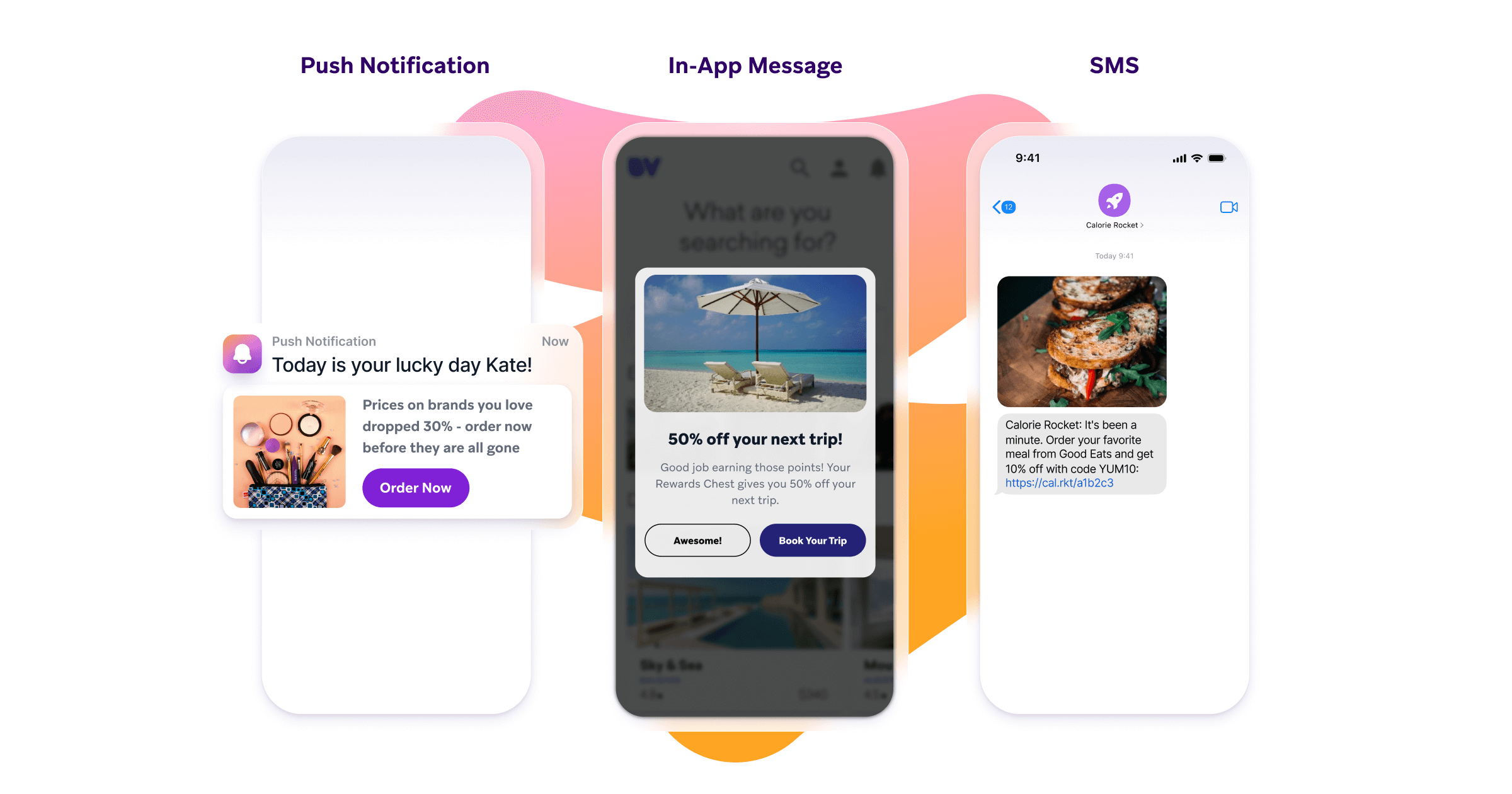
Web messaging channels examples
- Web push notifications. The web version of push notifications, these messages allow marketers to seamlessly reach users even when they’re not currently visiting a company’s website.
- In-browser messages. The web version of in-app messages, these messages make it possible to engage web visitors within the context of their website visit.
Cross-platform messaging channels examples
What are examples of channels that operate across multiple platforms? Email works across the mobile web and desktop web, while Content Cards work across websites and apps and across mobile and desktop.
- Email. The original digital messaging channel and still among the most impactful, email allows brands to reach users on the web and mobile alike with rich, memorable communications.
- Content Cards. This channel supports unobtrusive, persistent messaging that feels native to a website or mobile app, opening up new marketing opportunities for brands.
Social messaging channels examples
Brands can use social messaging channels like WhatsApp, Facebook Messenger, and other instant chat messaging platforms to create dynamic, two-way messaging campaigns to drive customer engagement.
How Do You Define “Channel” in Marketing vs. “Platform” in Marketing?
While many people use the words “channel” and “platform” almost interchangeably, the terms aren’t exactly the same. So let’s take a closer look at these key concepts and explore how they relate to each other and what they mean for your marketing efforts.
First, let’s define a platform in marketing.
What is a platform in marketing?
A platform in marketing is something that businesses can use to build a presence on. That presence can be used to then connect and communicate with customers.
Examples of platforms in marketing include:
- The web: Arguably one of the first true digital platforms and certainly the most decentralized, the web provides an open setting where brands can create an owned presence and engage with their customers via websites and web messaging.
- Operating systems: Examples include the iOS (Apple) and Android (Google) operating systems, which power Apple’s App Store and the Google Play store, respectively. Brands can use these platforms to create apps and power messaging to engage with their customers across mobile devices, tablets, smart watches, and other connected devices.
- TV and gaming platforms: Streaming platforms (Roku, Fire TV, etc.) have stores where brands can create apps as well, and gaming engines like Unreal Engine support messaging and analytics on games and apps.
- Social media platforms: Meta (the parent company to Facebook, Instagram, and WhatsApp), YouTube, Tiktok, Pinterest, and Snap are actually platforms built on top of other platforms (i.e. the web and operating systems like iOS and Android). Companies use YouTube, Facebook, Instagram, Facebook Messenger, WhatsApp, TikTok, Pinterest, and Snapchat to create a brand presence and connect with consumers.
What are the primary differences between marketing platforms and marketing channels?
In general, think of platforms as “locations” where consumers can engage with a brand’s digital presence (whether that’s a website, a mobile app, a social media page, or something else), while channels are digital communication mediums that are often associated with a given platform.
When people talk about mobile app marketing channels, for instance, they’re referring to messaging channels that function exclusively in the context of a mobile operating system like Android or iOS. However, it’s important to keep in mind that some channels—like email—are designed to function across different platforms, allowing marketers to reach both web and mobile users with a single message.
As Harvard Business Review (HBR) breaks down the difference between platforms and channels in marketing, “Channels are one-way pipes” while “platforms are two-sided networks.”
HBR goes on to explain that the difference between marketing channels and marketing platforms is like comparing Netflix (an owned channel created by Netflix for Netflix to connect with Netflix’s owned audience) and YouTube (a platform where brands can create their own organic owned presence by setting up branded accounts and creating and sharing branded content or creating and sharing paid, sponsored content).
How do platforms and channels support cross-channel marketing efforts?
For most brands, platforms represent the core digital experiences that they’re offering up to their customers—and in today’s increasingly digital-first world, these experiences may be central to how each customer perceives and values that brand. Similarly, messaging channels often offer the most effective ways for brands to engage, monetize, and retain their customers. By understanding the platforms and channels that resonate (or don’t) with your customers, you can better assess where to invest your finite resources to drive better marketing outcomes.
What does that look like in practice? Imagine that your brand is looking to build out a major holiday campaign. If you know that, for instance, your mobile app users tend to make purchases more frequently and that push notifications and in-app messages used in tandem historically have driven the most conversions, you can ensure that your highest-impact platforms and channels are being leveraged to support your business goals—then look at ways to improve outcomes for the other platforms and channels your audience engages with.
Wait, what about marketing technology platforms? What are marketing technology platforms?
Not to confuse things further, but there’s another type of marketing platform you’ll see mentioned. The phrase “marketing technology platforms,” AKA MarTech platforms, is commonly shortened to just “marketing platforms.”
This type of marketing platform refers to the tools and technologies brands can use to create, optimize, send, and measure the impact of marketing campaigns. Unlike the type of marketing platforms we described above (such as the web or mobile operating systems), marketing technology platforms do not have audiences for brands to connect with and they don’t have a platform that companies can create a presence on.
When people talk about these types of marketing platforms, what they’re really talking about is a marketing technology, marketing system, marketing tool, or marketing solution, such as the Braze customer engagement platform.
What’s the difference between social media platforms vs. social media channels?
The reality is, people use the terms social media platforms and social media channels interchangeably. So if you’re looking for “platform” meaning in social media and wondering how that relates to channels of social media, they’re essentially the same thing.
Think about it like this: Social media platforms (like Meta, YouTube, etc.) have created a place where brands can create an owned or paid presence for connecting with consumers, whether that’s using two-way messaging via WhatsApp campaigns or deploying targeted paid ad campaigns via Instagram, YouTube, Pinterest, TikTok, Snapchat, and more.
How to Use Messaging Channels and Platforms to Support Your Marketing
Using email as a channel for marketing
Done right, email is a conversation—customers tell email senders who they are and what they value through their engagement behavior, and senders respond with increasingly relevant, personalized campaigns.
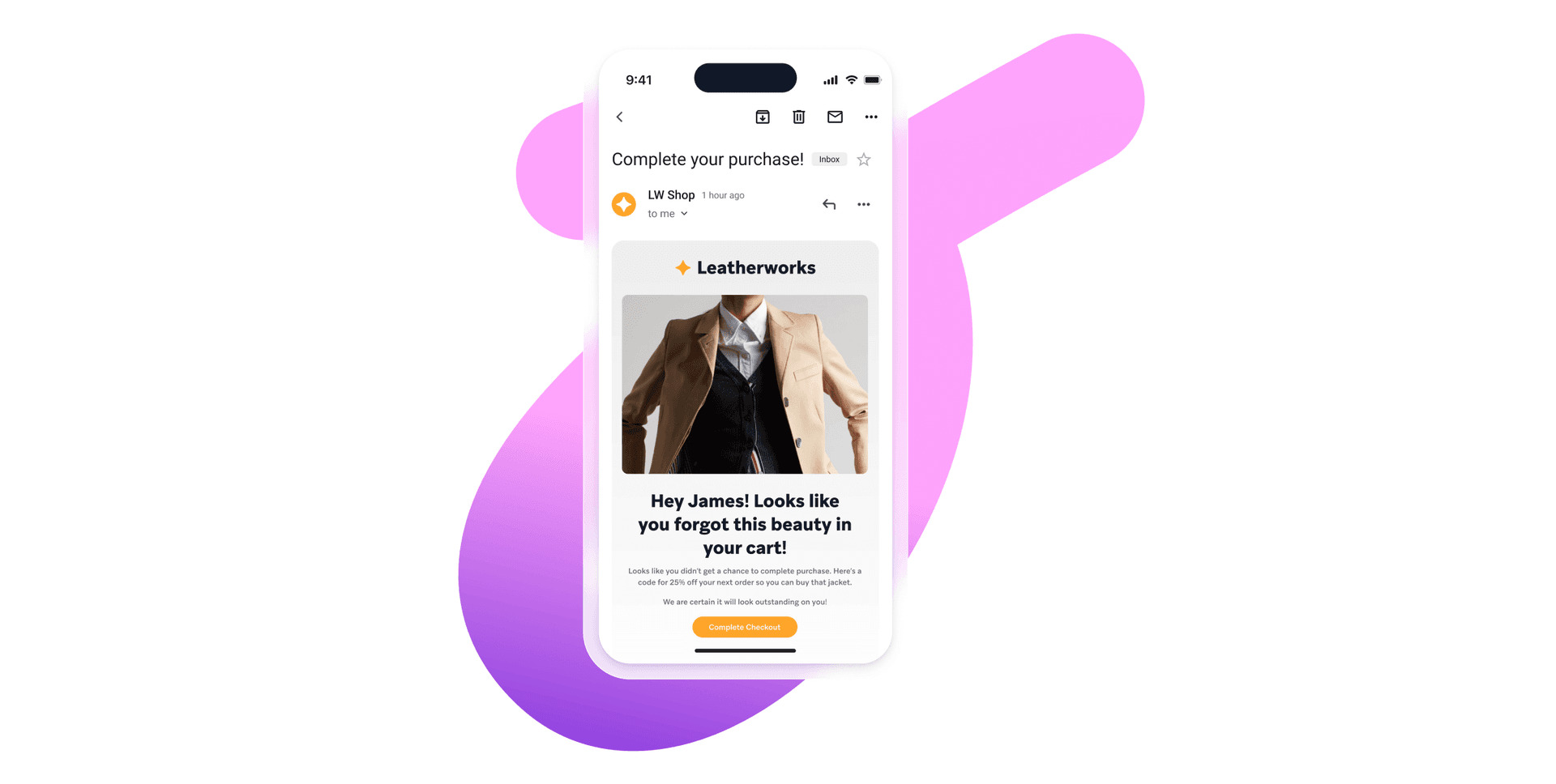
What are the benefits of email as a channel for marketing?
Research by Braze shows there’s a 45% lift in engagement when using email marketing compared with a control group in which users receive no messaging.
Best practices for using email as a channel for marketing
1. Be mindful about how (when and to whom) your brand sends emails. Thanks to a plague of spam messages in the 1990s, email providers have become vigilant about ensuring that their users aren’t overwhelmed with irrelevant or unwanted messages. Today, email marketers have to comply with Yahoo and Gmail’s sending requirements to successfully send mail to those platforms, in addition to any anti-spam and privacy laws applicable in their jurisdictions.
2. Prioritize deliverability best practices like dedicated subdomains alongside customer-first practices like message personalization, preference centers, and soliciting subscriber feedback regularly.
3. Create dynamic email campaigns that boost engagement While emails need to be personal, they can also be responsive, increasing engagement and interactivity within the inbox. Using tools like the open-source AMP for Email, it’s now possible to send emails that support in-message interactions—allowing recipients to theoretically swipe through dating profiles, complete and submit surveys, or schedule an appointment without ever clicking through to a web page or app.
4. Follow our IP warming guide. Win over internet service providers (ISPs) and maximize how many emails actually get delivered by gradually scaling up send volumes and demonstrating that recipients are interested in hearing from you.
5. Leverage real-time personalization tools like Connected Content to pull in up-to-date information about each email recipient from outside sources via APIs and seamlessly insert it into your emails. Send emails that show your customers you know them!
6. Take advantage of smart testing technologies. Test everything: messaging, subject lines, CTAs, imagery, and more to find out what your audience responds to, and ditch what they don’t.
Using SMS as a channel for marketing
Customers who give you their phone number trust you to treat it with respect. With that number in hand, you have the opportunity to build an immediate, intimate connection with that user. While consumers often associate SMS with communications between friends and family, it can be a powerful tool for brands.
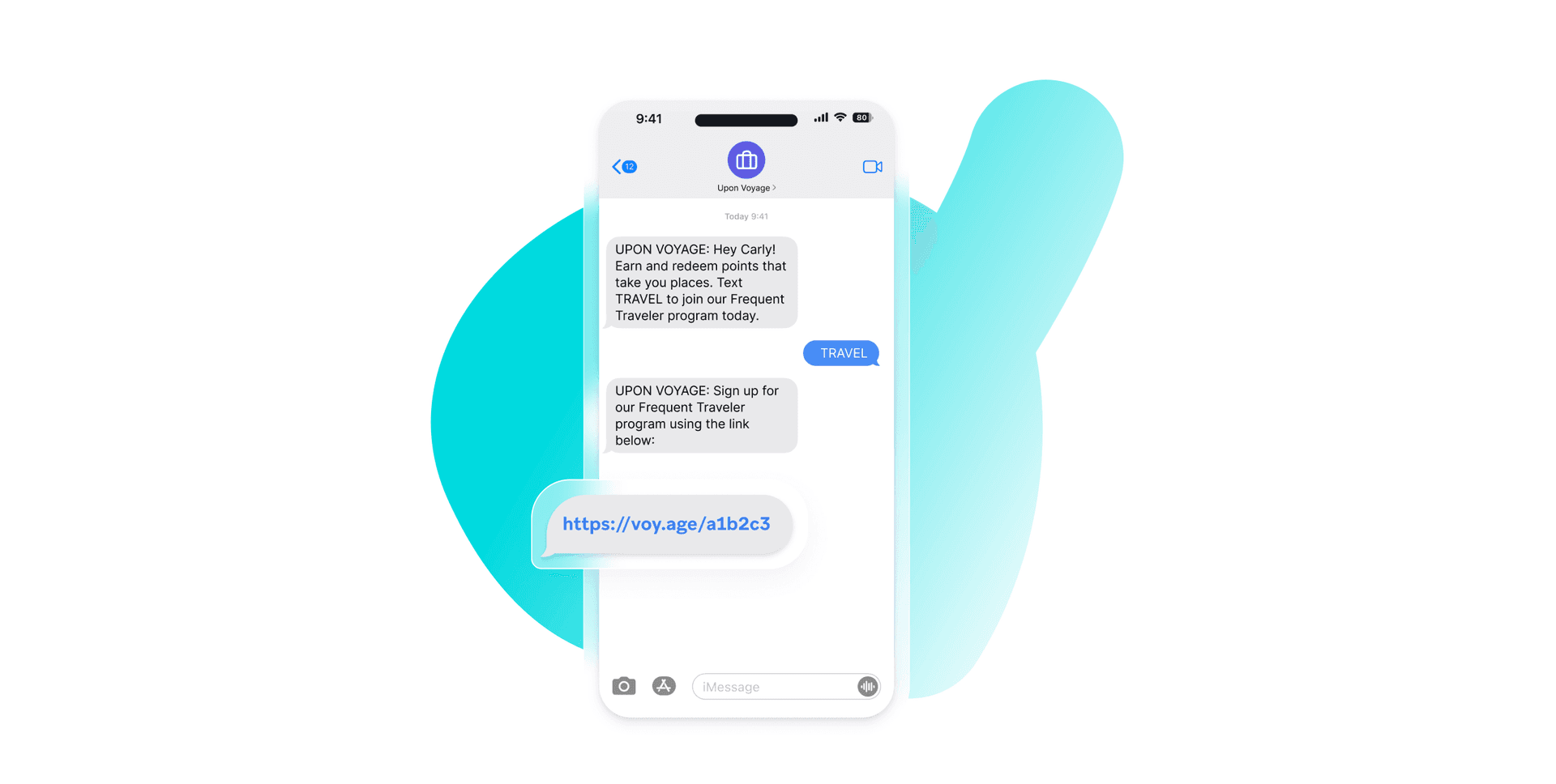
What are the benefits of SMS as a channel for marketing?
- Personal channel: SMS is used heavily for peer-to-peer messaging, especially in the US, so it’s ideal for building deeper relationships with your most valuable customers.
- Global reach: In certain global markets like APAC, SMS is the standard digital communications medium, rather than email.
- Two-way interactions: Messages can kick off conversations between customers and brands, supporting an interactive back and forth between the two sides.
- High open rates: Recipients rarely pass over SMS messages, which have a 98% open rate.
Best practices for using SMS as a channel for marketing
SMS campaigns should be used for:
1. Sharing critical info. Think delayed flights and upcoming medical appointments—or real-time updates on when a table at that hot new restaurant will be free.
2. Updating users about transactions. Think alerting shoppers to the real-time status of an order.
3. Sending mobile-only exclusives. Think sending exclusive codes or first dibs on new products to reward customers.
4. Valuable content. SMS is a personal channel. Reserve it for campaigns that will deliver value and skip the batch-and-blast messaging.
5. Starting a two-way convo. Think leveraging this channel’s support for two-way messaging to allow customers to reply.
Using push notifications as a channel for marketing
That buzzing in your pocket is the versatile push notification—whether it’s short and sweet or enriched with images, action buttons, and other advanced functionality, push is super-helpful at getting customers to open apps. While mobile push notifications might be what first comes to mind when you think of push, push notifications also come on the web, connected TV devices, smart watches, tablets, and more. Just like their mobile messaging counterpart, these are built for short, urgent communications, but support rich content like images.
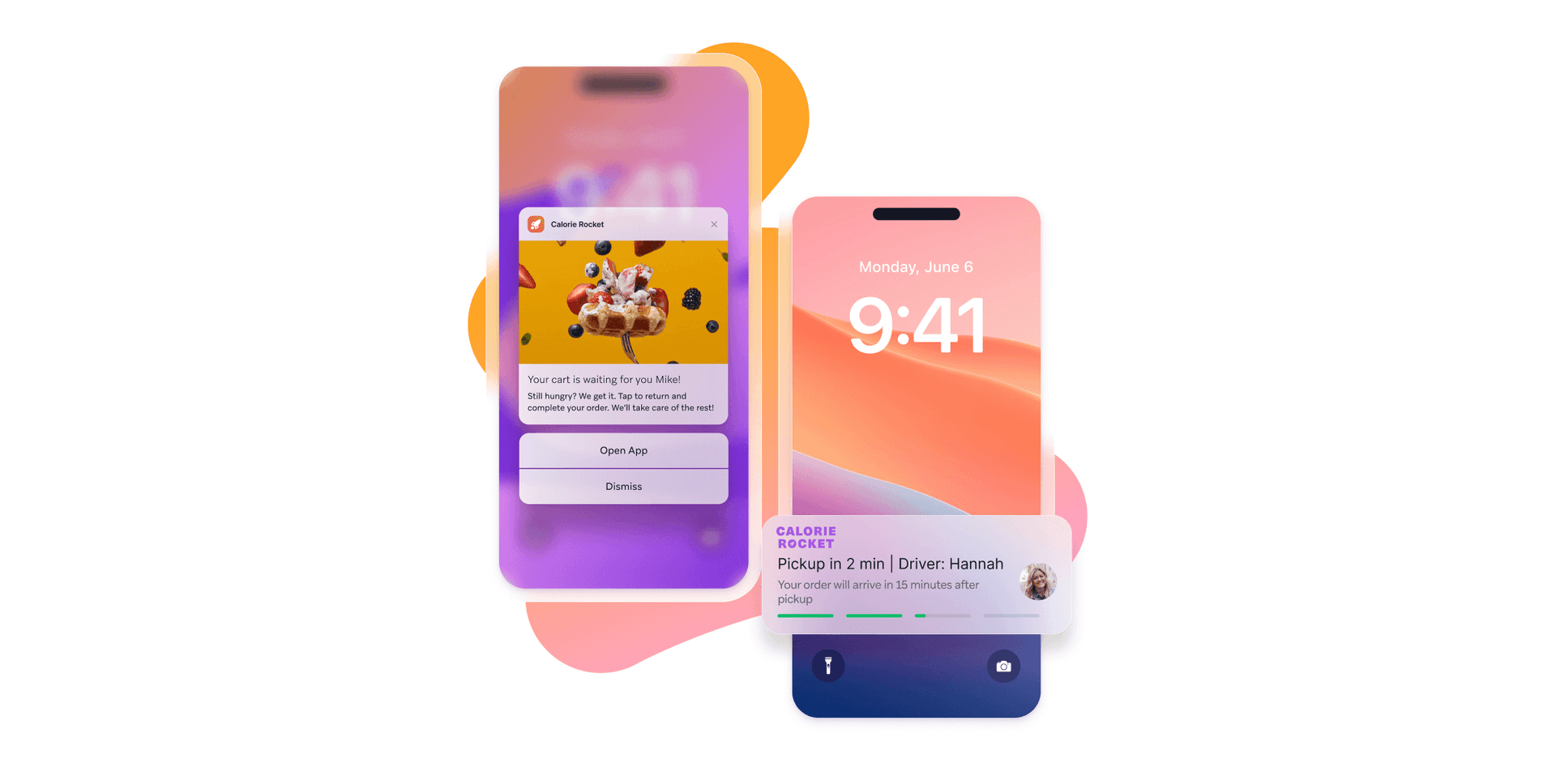
What are the benefits of push notifications as a channel for marketing?
Push notifications are a powerful tool for boosting revenue and re-engaging customers who haven’t interacted with your brand lately. Braze research finds companies can deliver a 191% lift in engagement with push notifications versus no messages at all.
Best practices for using push notifications as a channel for marketing
1. Be thoughtful about push timing and frequency. What happens if you’re too pushy? People will opt out of push notifications or uninstall an app if you pester them too much with irrelevant messages.
2. Provide a warm welcome. See stronger engagement among new users by using in-app messages to prepare and opt them in to push notifications.
3. Win back old friends. Reach inactive customers with a blend of out-of-product channels like email and push notifications.
4. Take advantage of timeliness. Message customers about current events, like alerts about the weather or a big holiday sale.
Using in-app and in-browser messages as a channel for marketing
In-app messages are built to reach people when they’re using your mobile app (or, in the case of the web version—which are known as in-browser messages—your website).
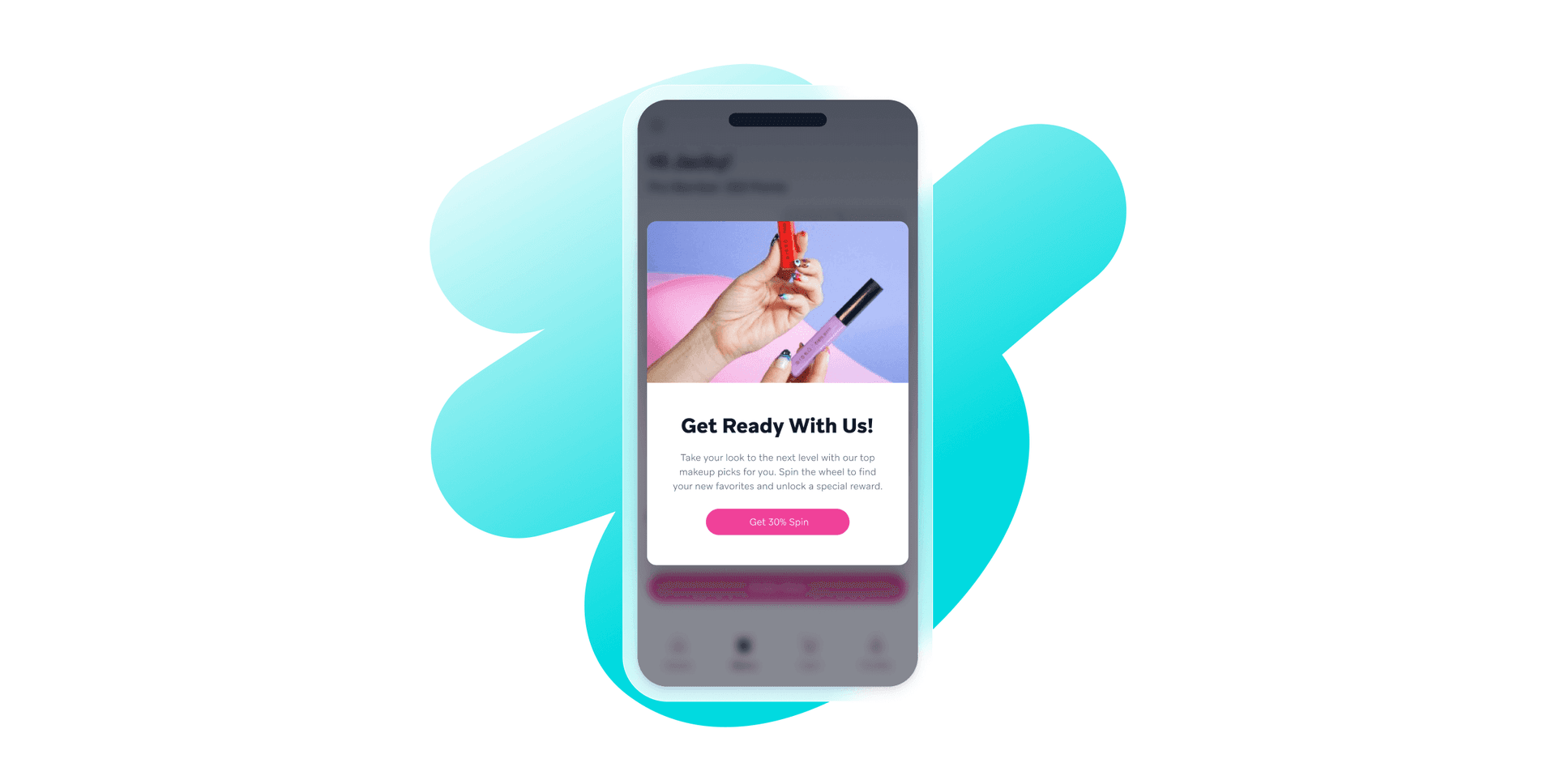
What are the benefits of in-app or in-browser messages as a channel for marketing?
In-app messages allow you to customize the experience with GIFs, clickable buttons, and more to make messages feel more interactive and engaging and have been found to generate a 131% lift in engagement with in-app messages versus no messages at all, according to Braze research.
Best practices for using in-app and in-browser messages as a channel for marketing
1. Use in-app messages for the right use cases. They’re powerful for:
- Onboarding: Test and optimize different welcome flows when users first start using your app or website.
- Tailor-made targeting: Personalize the app or website experience for every user, instead of one-size-fits-all outreach.
- Filling engagement gaps: When paired with out-of-product channels like push or email, in-app messages and in-browser messages play nice with other channels to reach a wider audience.
2. Know when not to use in-app messages or in-browser messages. They’re not great for:
- Trying to win back customers: For reaching a disengaged user, you need a channel that reaches users outside the app, like push and email.
- Long-term information: To deliver coupons,loyalty rewards, and other benefits that customers might want to use later, you’ll be better off with a less ephemeral channel like email.
Using mobile and web Content Cards as channels for marketing
Mobile and web Content Cards
Ever swipe away a push notification only to wish you had it later? Content Cards solve this problem. These messages serve up dynamic, persistent content that users can find in their apps or websites when they need them—so no more missed promos.
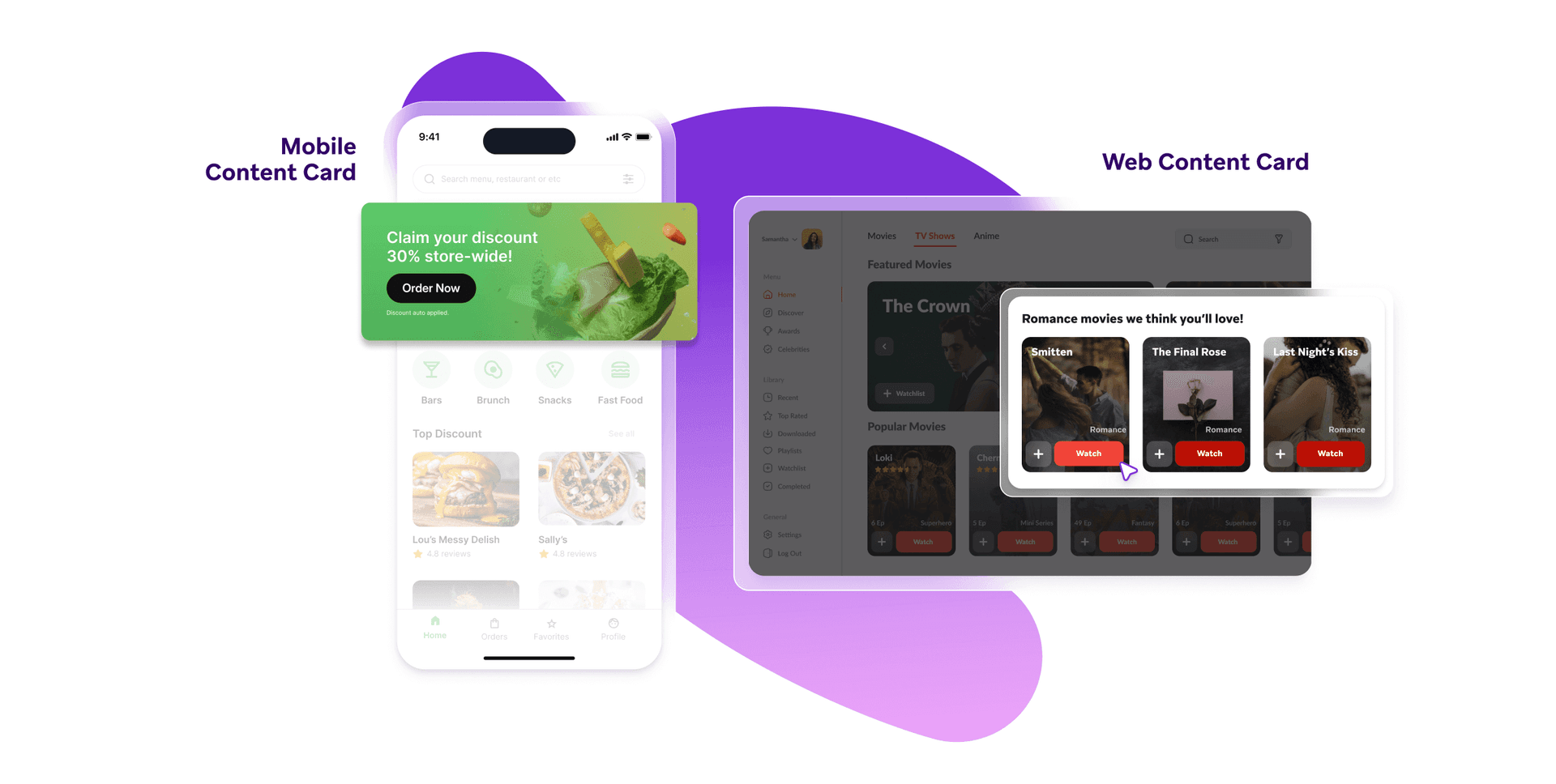
Mobile and web Content Cards are great for creating:
- Notification centers: Centralize the updates that are most important to customers and ensure they can always find them.
- Promotions feeds filled with personalized promotional messaging: Motivate customers to shop with a dynamic flow of new offers targeted to them as an individual based on their past engagement.
- Onboarding and new features: Build a feed of tips to make the new user experience more fun and engaging.
Using social chat and messaging platforms for marketing
With platforms like Facebook Messenger and WhatsApp sporting billions of users, messaging app platforms are an incredibly effective way to reach customers around the globe.
What are the benefits of using messaging app platforms for marketing?
Messaging apps like WhatsApp and social media chat platforms like Facebook Messenger support automated, one-to-one customer/brand interactions.
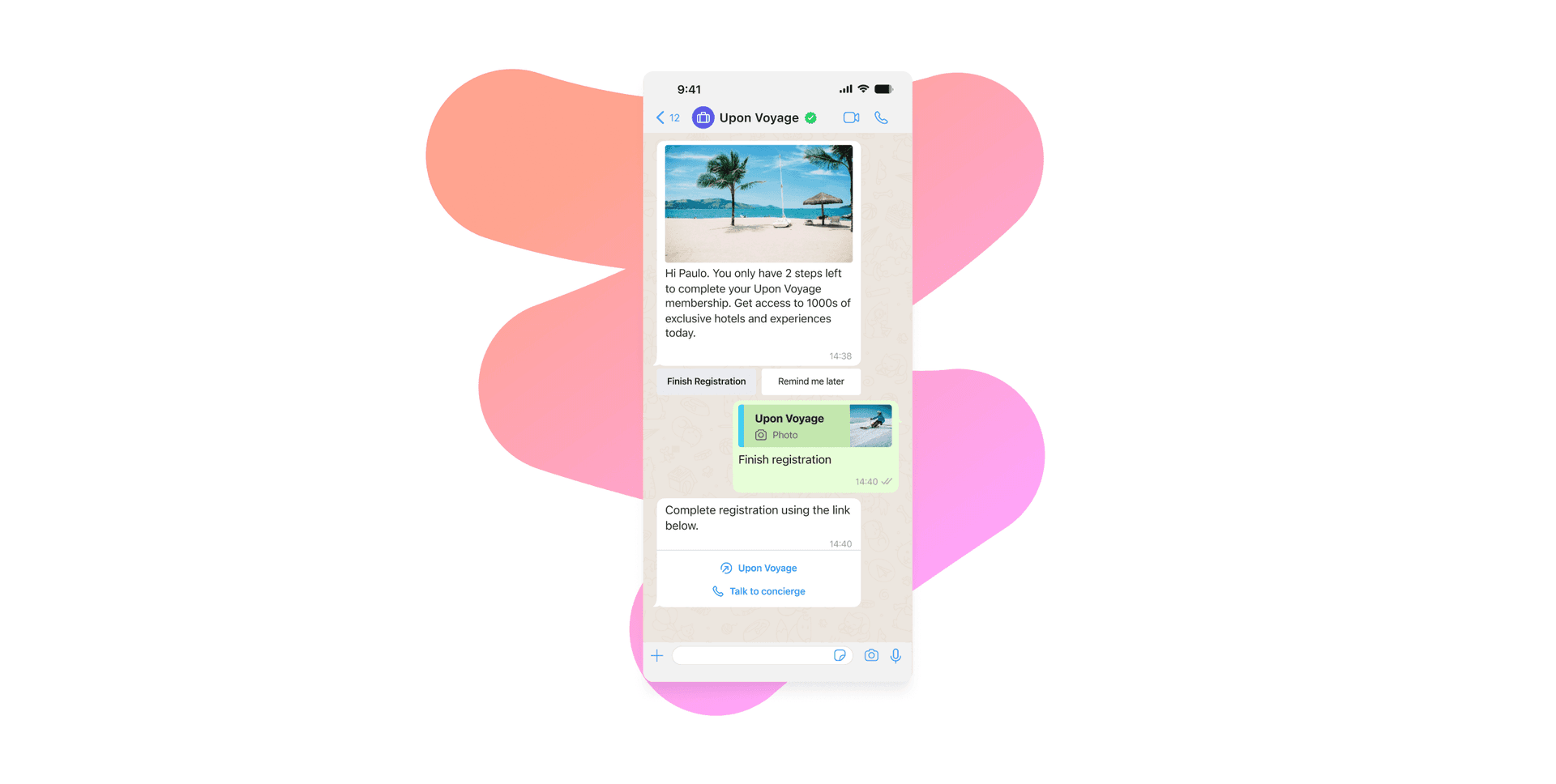
Best practices for using messaging app and social chat platforms for marketing
Use this channel to:
- Reach users across the globe. In countries and regions outside of US, like Latin America, Europe, Asia, and the Middle East, messaging app platforms are one of the best ways to reach users. For example, more than 80% of business owners in markets from Brazil to India use WhatsApp Business Messaging for customer communications.
- Reduce friction for transactional use cases. Offer customers who are highly engaged on messaging platforms the ability to receive transactional messages to give them the information they need without forcing them to open another app.
- 1:1 personalized promotional use cases. While you shouldn’t use messaging apps for batch and blast promotions, they are well-suited for 1:1 personalized promotions like recommendations, exclusive offers, and more.
What to know about frequency when using messaging channels for marketing
Your company can get the most out of your messaging by setting these “just right” targets for each channel. As you take advantage of more channels, keep a close eye on the number of messages you’re sending each customer—both in general, but also for each channel. The right frequency is going to vary by industry, brand, or by user segment. But there’s an optimal messaging frequency for your specific users and the right cross-channel send rate can drive stronger engagement across all channels, platforms, and devices.
The benefits of cross-channel customer engagement
Brands today are living in a cross-device, cross-platform, cross-channel world—and so are all of their customers. That means there’s no single messaging channel that can reach everybody effectively. Each one has its own unique strengths, but used in a vacuum, their positive impact is limited.
Watch our webinar to learn how the marketing team at Max leverages this powerful channel to craft highly interactive, relevant, and personalized campaigns—and how you can get started with WhatsApp.
Marketing Channels and Platforms FAQs
A cross-channel marketing platform like Braze helps brands create, deploy, manage, optimize, and measure the impact of campaigns across channels, platforms, and devices. Braze supports efforts across email, SMS, mobile, web, paid media, and more.
Social media platforms refer to platforms companies like Meta (parent company of Facebook, Instagram, and WhatsApp), TikTok, Pinterest, LinkedIn, YouTube, and X have created where brands and consumers can create a presence and connect.
The most frequently used channels of social media are constantly changing. As of 2024, the most popular social networks worldwide (based on monthly active users) are Facebook, YouTube, Instagram, WhatsApp, and TikTok.
Brands should consider the demographics and customer engagement patterns of their users. Some customers may prefer mobile and social channels, while others may prefer using desktops and more traditional channels like email. They also need to consider the cost and impact of owned vs. paid channels. The best strategy is a cross-channel strategy that reaches the right users in the channels where they want to be engaged.
Brands can measure the return on investment of using marketing channels or platforms by tracking customer engagement metrics (opens, clicks, conversions, etc.), customer retention by segment, and customer value—that is the ratio of customer acquisition costs to customer lifetime value over time. Overall, a ratio of 1:3 customer acquisition cost (CAC): Customer lifetime value (CLV) is a strong benchmark to aim for.
As we explain in our guide to notification channels, notification channels give brands a way to organize the Android push notifications they send to customers, kind of like a preference center specifically for push notifications. (iOS also has a similar feature that’s called notification groups.)
Related Tags
Be Absolutely Engaging.™
Sign up for regular updates from Braze.
Related Content
View the Blog
The new inbox reality: How iOS changes are reshaping email marketing

Aparna Prasad

Experience optimization: Turning data insights into better journeys

Team Braze

December 2025 Bonfire Marketer of the Month: Jagex’s Emma Oliver
